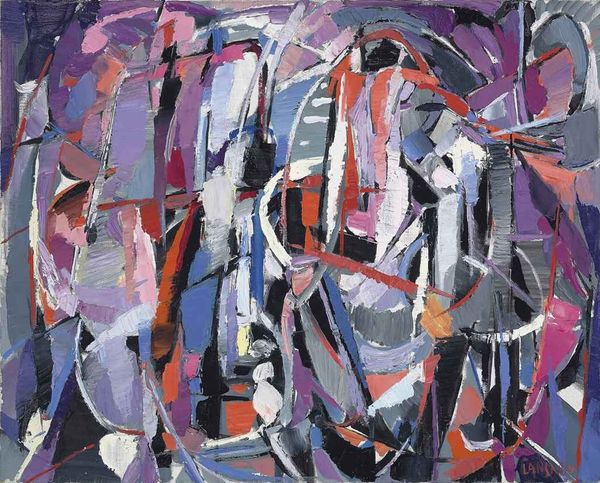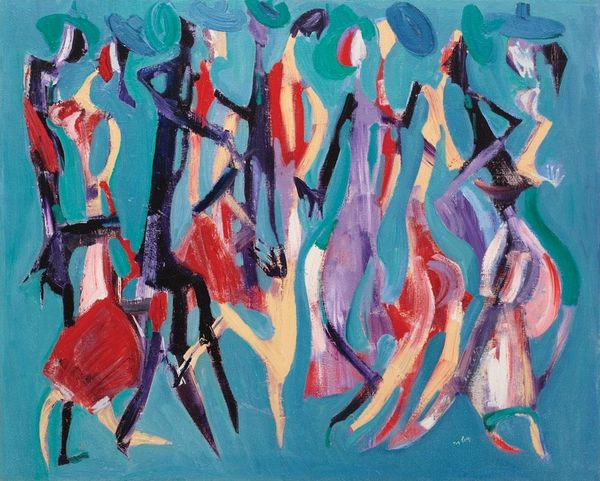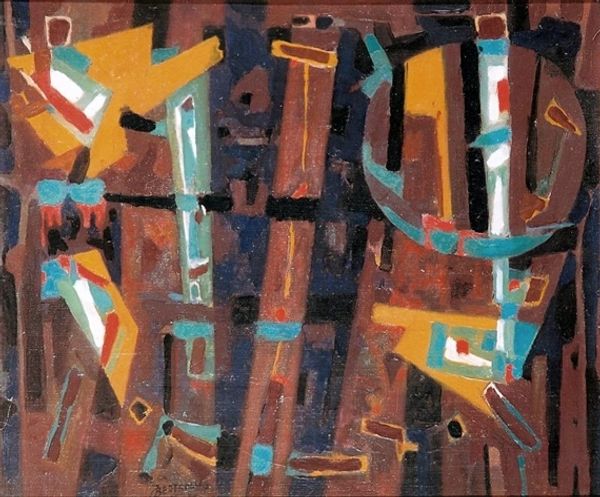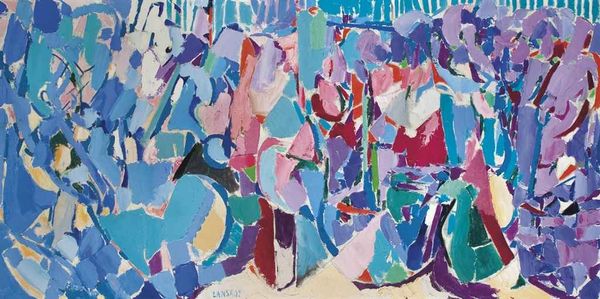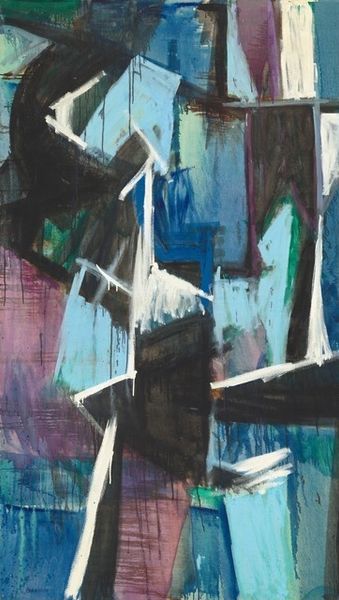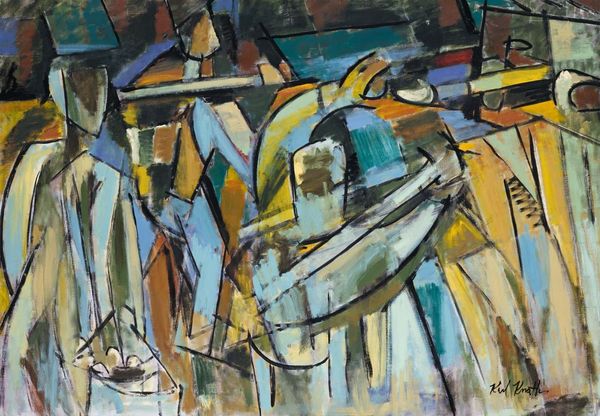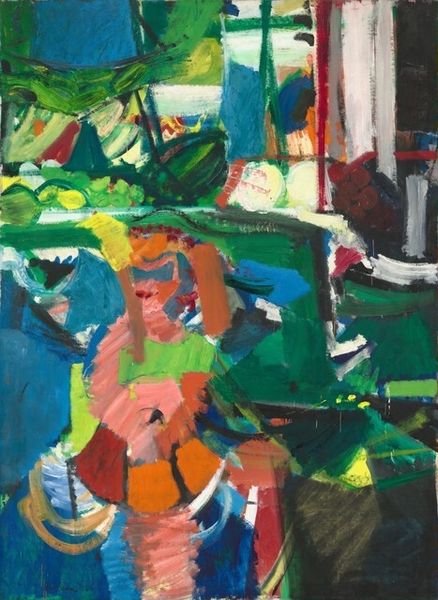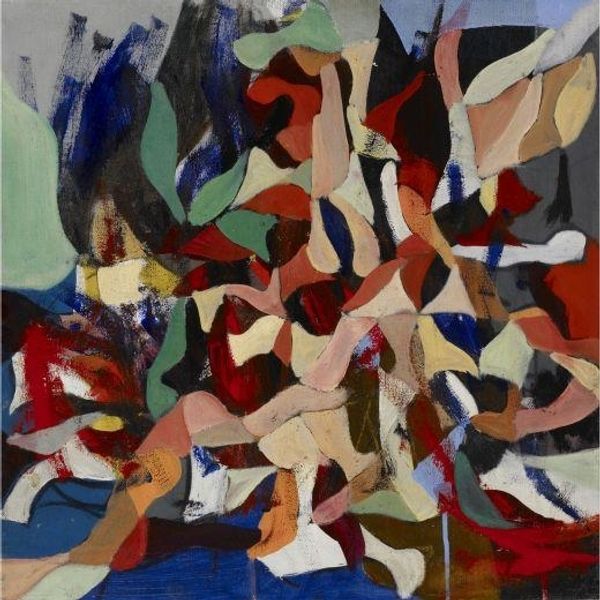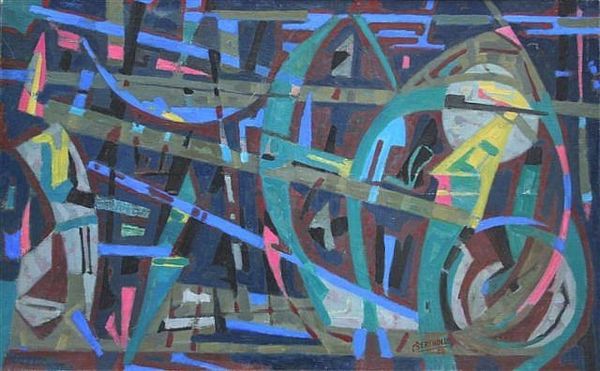
acrylic-paint
#
abstract-expressionism
#
abstract expressionism
#
abstract painting
#
acrylic-paint
#
form
#
acrylic on canvas
#
abstraction
#
line
#
expressionist
Copyright: Andre Lanskoy,Fair Use
Editor: Here we have Andre Lanskoy’s “Abstract Composition” from 1965, crafted with acrylic paint. There’s a real vibrancy despite what seems to be a dark, even navy, base. How do you interpret the relationship between material and form here? Curator: The acrylic here allows for those sharp, distinct blocks of color. It wasn't about concealing the brushstrokes or the materiality; instead, the paint's inherent qualities contribute directly to the artwork's meaning. Do you think a similar composition could have been created in oils? Editor: I suppose oil would lend itself to more blending, a softer texture, impacting the geometric impact. How does the social context influence our perception of a work like this, built so explicitly on form and color? Curator: Remember this is 1965, a time of mass production and rising consumerism. Acrylic paints, themselves products of industrial chemistry, provided a new medium, divorced from the traditional labor-intensive processes of oil painting. So, what appears as pure abstraction also reflects the shifts in material culture of that period. Editor: That makes so much sense! The painting itself is a product of its time, reflecting technological advancements in its very composition. Curator: Exactly! The choice of acrylic, and its application, are inherently linked to its cultural moment. The materiality drives the concept. Editor: So it is not just abstract form, it’s about acknowledging the manufacturing process that underpins this particular painting's creation. Fascinating! I’ll certainly consider the materials artists utilize beyond aesthetics in the future. Curator: Indeed, focusing on materials provides us tangible insights into the context in which artwork is created.
Comments
No comments
Be the first to comment and join the conversation on the ultimate creative platform.
